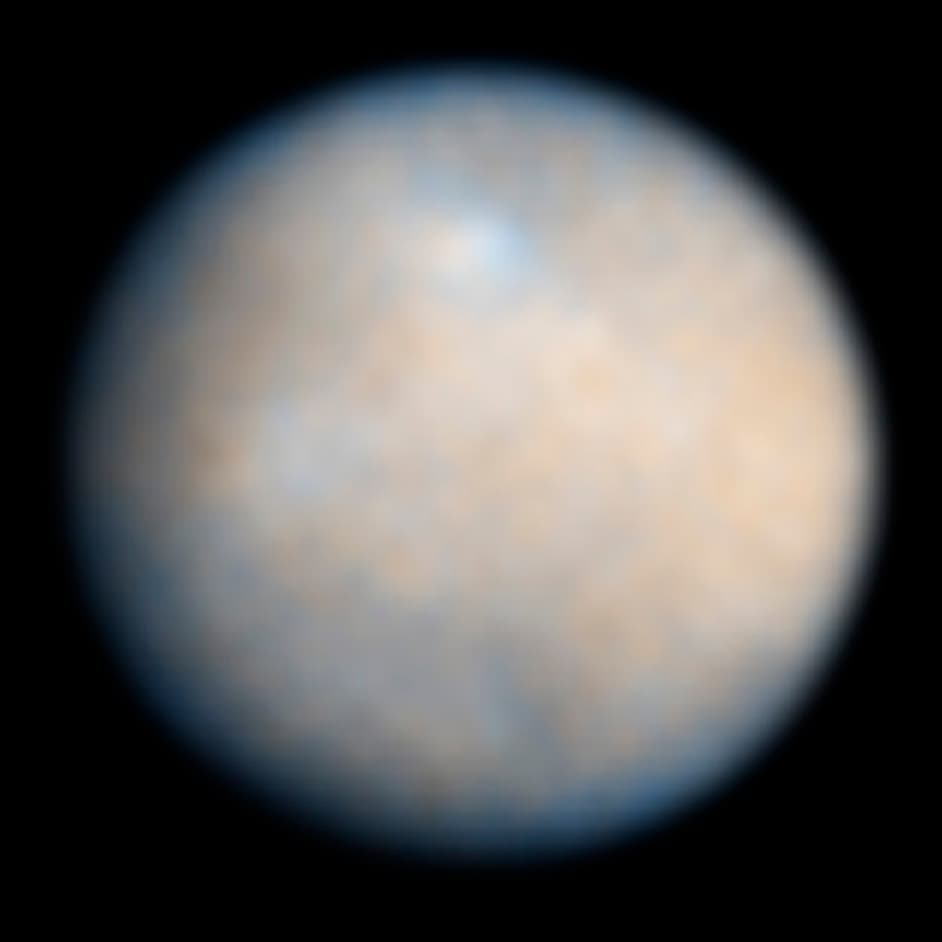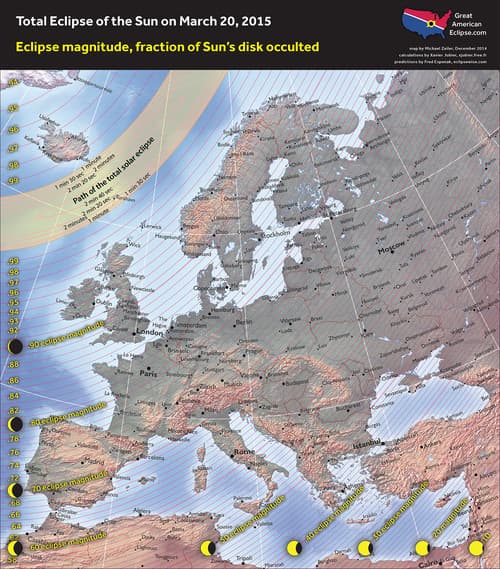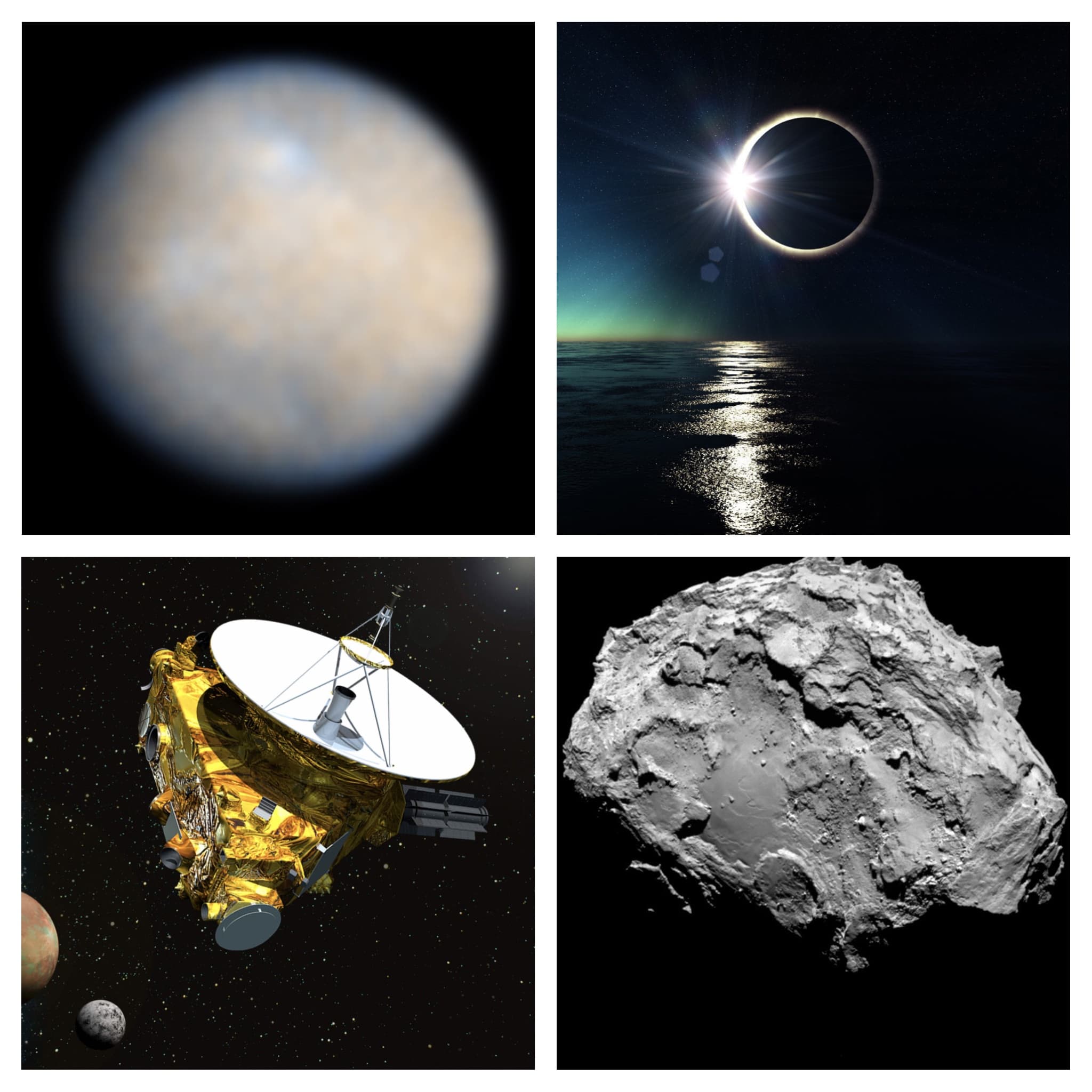6th of March – Dawn arrives at Ceres.
The space probe Dawn, which recently took some stunning pictures of the asteroid Vesta, will encounter Ceres in March. Ceres is the largest object in the Asteroid Belt and the only dwarf planet in the inner solar system. It has a diameter of 950 km and a proper orbital motion around the Sun of 1681 Earth days.

Ceres as seen by Hubble Space Telescope (ACS)
Dawn’s mission in the asteroid belt is to investigate the primordial components of the Solar System (perfectly preserved in the slow changing asteroid) to evaluate the impact that different components in the formation and evolution of rocky planets such as ours.
20th of March – Total Solar Eclipse visible in the North Atlantic
Between two and five solar eclipses occur every year, with the occurrence of a total eclipse happening about every year and a half. Unfortunately they often happen in remote areas of the planet so they don’t cause much excitement. This year is slightly different.

Map of the Eclipse by The Great American Eclipse website (http://www.greatamericaneclipse.com/march-20-2015/)
As shown from this wonderful map made by http://www.greatamericaneclipse.com/, most of Europe will be treated to a spectacular early morning partial eclipse whose path of totality will cover Svalbard.
14th of July – Pluto Fly-By
The most important planned astro-event of the year has to be the New Horizon fly-by of Pluto. The NASA mission will give us long due high definition photos of the Kuiper’s belt monarch and its five satellites (Charon, Hydra, Nix, Kerberos, Styx). The first images should start arriving in February, with better resolution than the Hubble telescope photo expected on the 5th of May.
The closest passage will happen on the 14th of July. Afterwards, the probe will move towards other objects of Kuiper Belt, and then proceed to leave the Solar System.
13th of August – Rosetta’s comet Perihelion
Rosetta and the ESA team were at the center of public interest in late 2014 but the mission is far from over. In August the comet 67P/Churyumov-Gerasimenko will reach it’s closest point to the Sun at about 186 million km (for reference the Earth is at 150 million km). The approach will bring forth changes on the surface of the comet as it exposed to stronger sunlight and Rosetta will be there to study it.

Comet 67P/Churyumov–Gerasimenko photographed by Rosetta (ESA)

